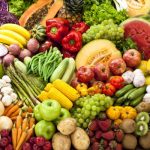Environmental Considerations of Food Preservation
Food preservation is essential for reducing waste and ensuring a steady supply of food, but it’s important to consider the environmental impact of different preservation methods. Freeze drying, a method that removes moisture from food while preserving its nutritional value and flavor, has its own environmental implications. In this blog, we’ll explore the environmental impact of freeze drying, focusing on energy use, food waste reduction, and sustainable packaging options.
Energy Use: Comparing Energy Consumption
One of the primary environmental concerns with freeze drying is energy consumption. Freeze dryers use electricity to operate, which can contribute to greenhouse gas emissions depending on the source of the electricity. Here’s how freeze drying compares to other preservation methods:
- Freeze Drying vs. Canning: Freeze drying typically uses more energy than canning due to the need to maintain a vacuum and low temperatures over an extended period. However, the energy use per preserved unit of food can be offset by the longer shelf life and reduced spoilage.
- Freeze Drying vs. Freezing: Both freeze drying and freezing require significant energy. However, freeze-dried foods do not need to be kept cold after processing, which can save energy in the long run compared to continuously operating a freezer.
- Efficiency Improvements: Modern freeze dryers are becoming more energy-efficient, and advancements in technology are helping to reduce their overall environmental footprint.
To minimize energy consumption, it’s important to use energy-efficient models and consider the energy sources powering your freeze dryer, opting for renewable energy whenever possible.
Food Waste: Reducing Food Waste with Freeze Drying
One of the significant environmental benefits of freeze drying is its potential to reduce food waste:
- Extended Shelf Life: Freeze drying extends the shelf life of foods by removing moisture, which prevents the growth of bacteria and mold. This helps reduce the amount of food that spoils and gets thrown away.
- Preservation of Nutrients: Freeze drying preserves the nutritional content of food better than many other methods, making it a viable option for storing surplus food that might otherwise go to waste.
- Flexibility: Freeze drying allows for the preservation of a wide variety of foods, including fruits, vegetables, meats, and prepared meals, helping to minimize waste across different food categories.
By reducing food waste, freeze drying can contribute to a more sustainable food system and decrease the environmental impact associated with food production and disposal.
Packaging: Sustainable Packaging Options
Packaging plays a crucial role in the environmental impact of freeze-dried foods. While traditional packaging materials like plastic can contribute to environmental pollution, there are more sustainable options available:
- Mylar Bags: These bags are durable and effective at protecting freeze-dried foods from moisture and oxygen. While not biodegradable, they can be reused multiple times, reducing waste.
- Biodegradable Packaging: Some companies are developing biodegradable and compostable packaging options that can be used for freeze-dried foods. These materials break down more quickly in the environment, reducing long-term waste.
- Glass Jars: Mason jars and other glass containers are reusable and recyclable, offering a more sustainable option for storing freeze-dried foods at home.
- Vacuum-Sealed Bags: While typically made of plastic, vacuum-sealed bags can be reused several times and help reduce food waste by keeping food fresh for longer periods.
Choosing sustainable packaging options helps minimize the environmental footprint of freeze-dried foods and supports broader efforts to reduce plastic waste.
Conclusion: Summary of Environmental Benefits
Freeze drying offers several environmental benefits, particularly when it comes to reducing food waste and enabling long-term food storage. While energy consumption is a consideration, advancements in technology and the use of renewable energy can help mitigate this impact. Additionally, opting for sustainable packaging solutions further enhances the environmental friendliness of freeze drying.
To summarize:
- Energy Use: Freeze drying uses significant energy, but advancements are improving efficiency.
- Food Waste Reduction: The extended shelf life and preservation of nutrients help reduce food waste.
- Sustainable Packaging: Using eco-friendly packaging options minimizes environmental impact.
By understanding and addressing these environmental considerations, we can make freeze drying a more sustainable method of food preservation, contributing to a more eco-friendly and efficient food system.


